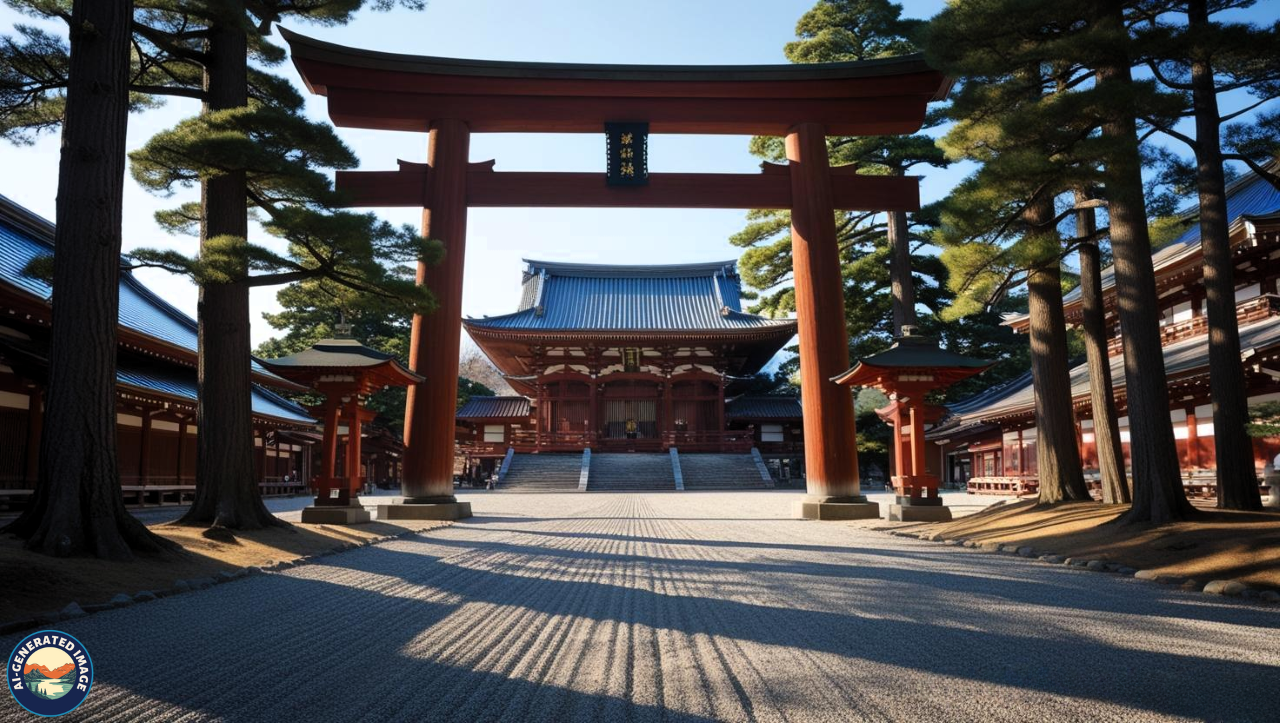
Tokyo, a city renowned for its skyscrapers, bullet trains, and futuristic technology, also offers a spiritual retreat nestled right in the heart of its bustling metropolis — the Meiji Shrine (Meiji Jingū). Surrounded by a serene forest and steeped in national pride, the shrine stands as a symbol of peace, reverence, and deeply rooted cultural identity.
For travelers seeking to understand Japan beyond its neon lights and vibrant pop culture, a visit to Meiji Shrine is an essential journey into the soul of the nation. This article explores the shrine’s historical, architectural, and spiritual dimensions in depth and provides everything you need to know to experience this timeless site fully.
Introduction
Tucked between the ultra-modern Harajuku and the stylish Omotesando district lies a sanctuary so tranquil that it feels almost surreal. The Meiji Shrine is not only a spiritual retreat but also one of Japan’s most important Shinto shrines, attracting millions of worshippers and tourists annually.
Built in honor of Emperor Meiji and Empress Shoken, the shrine is a tribute to their role in modernizing Japan during the Meiji Restoration. Today, it offers a stark yet harmonious contrast to the buzzing energy of Tokyo, representing a unique blend of tradition, nature, and national reverence.
History
The origins of Meiji Shrine trace back to 1920, eight years after the passing of Emperor Meiji and six years after the death of Empress Shoken. The Japanese government chose to honor the imperial couple’s contributions to the nation’s transformation during the Meiji era (1868–1912) — a period marked by rapid modernization, industrialization, and international diplomacy.
Emperor Meiji led Japan out of feudal isolation and ushered in a wave of progressive reforms that aligned the nation with Western powers while maintaining its cultural integrity. Empress Shoken supported humanitarian causes, including women’s education and welfare.
Originally constructed through a national movement that saw donations from people all across Japan — including more than 100,000 trees — the shrine was tragically destroyed during World War II bombings. However, in 1958, the citizens of Japan reconstructed it, reflecting the enduring national respect for the Meiji legacy.
The Sacred Grounds of Meiji Shrine
The shrine complex is composed of various sacred and architecturally significant zones, each designed to guide visitors through a spiritual experience.
The Torii Gates
Visitors enter the shrine grounds through a series of giant torii gates made from 1,500-year-old cypress wood. These imposing structures mark the transition from the secular world into the sacred. Walking under them evokes a sense of humility and awe.
The Forest
One of the most breathtaking aspects of the shrine is its 70-hectare forest, an entirely man-made woodland containing over 120,000 trees from more than 365 species. Donated by people from all corners of Japan, this forest was designed to be self-sustaining and symbolizes national unity.
Main Shrine Buildings
The main complex features traditional nagare-zukuri architecture with cypress wood and copper roofs. These include:
-
Honden (Main Hall):
-
Where the imperial spirits are enshrined.
-
Haiden (Worship Hall):
-
Open to the public for offering prayers.
-
Noritoriden:
-
Used by Shinto priests for chanting rituals.
The Inner and Outer Gardens
The Meiji Jingu Gyoen (Inner Garden), predating the shrine, includes a pond, a teahouse, and the beloved Iris Garden, particularly stunning in June when the flowers bloom in vibrant purples and whites.
Spiritual and Cultural Significance
Meiji Shrine isn’t just a beautiful place — it’s a living spiritual site. As a Shinto shrine, it is dedicated to kami (spirits), specifically the souls of Emperor Meiji and Empress Shoken. Unlike Buddhism, Shinto emphasizes harmony with nature and the spirits that dwell within it.
Major Ceremonies and Rituals
-
Hatsumode (New Year Visit):
-
More than 3 million people visit in the first three days of January to pray for a prosperous year.
-
Shichi-Go-San (7-5-3 Festival):
-
Celebrating the growth of children aged 3, 5, and 7.
-
Meiji Festival:
-
Held annually on November 3rd to commemorate Emperor Meiji’s birthday.
Traditional Weddings
Meiji Shrine is a popular site for Shinto-style weddings, where couples dressed in traditional attire walk in processions, accompanied by shrine maidens and priests. It’s a powerful sight that adds to the sacred atmosphere.
The shrine serves as a cultural bridge that links Japan’s imperial heritage, modern identity, and spiritual traditions — making it far more than a tourist attraction.
Must-See Highlights Inside the Shrine Complex
Barrels of Sake and Wine
One of the most iconic photo spots is the line of sake barrels (nihonshu) donated by brewers across Japan, symbolizing prosperity and harmony. Opposite them are wine barrels from France, a nod to Emperor Meiji’s embrace of Western culture.
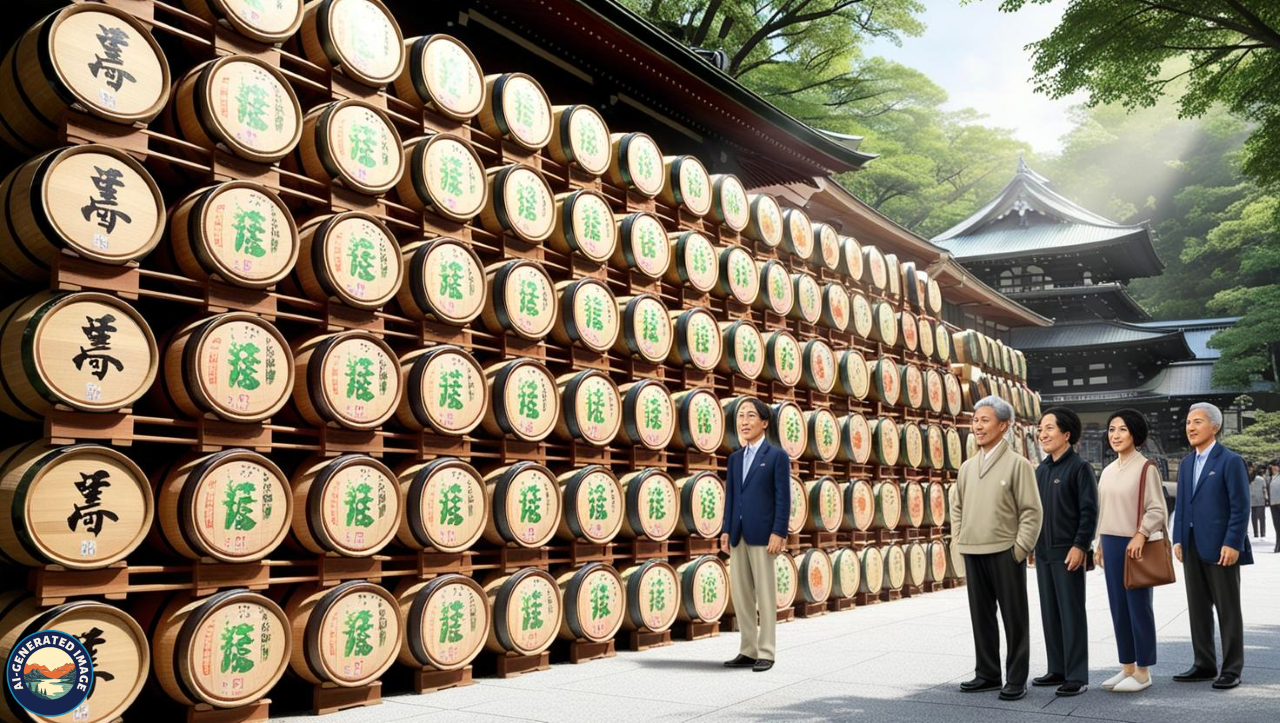
Kaguraden Hall
This hall is dedicated to sacred Kagura dance and music performances offered to the gods during festivals. Visitors can often hear traditional tunes echoing softly through the forest.
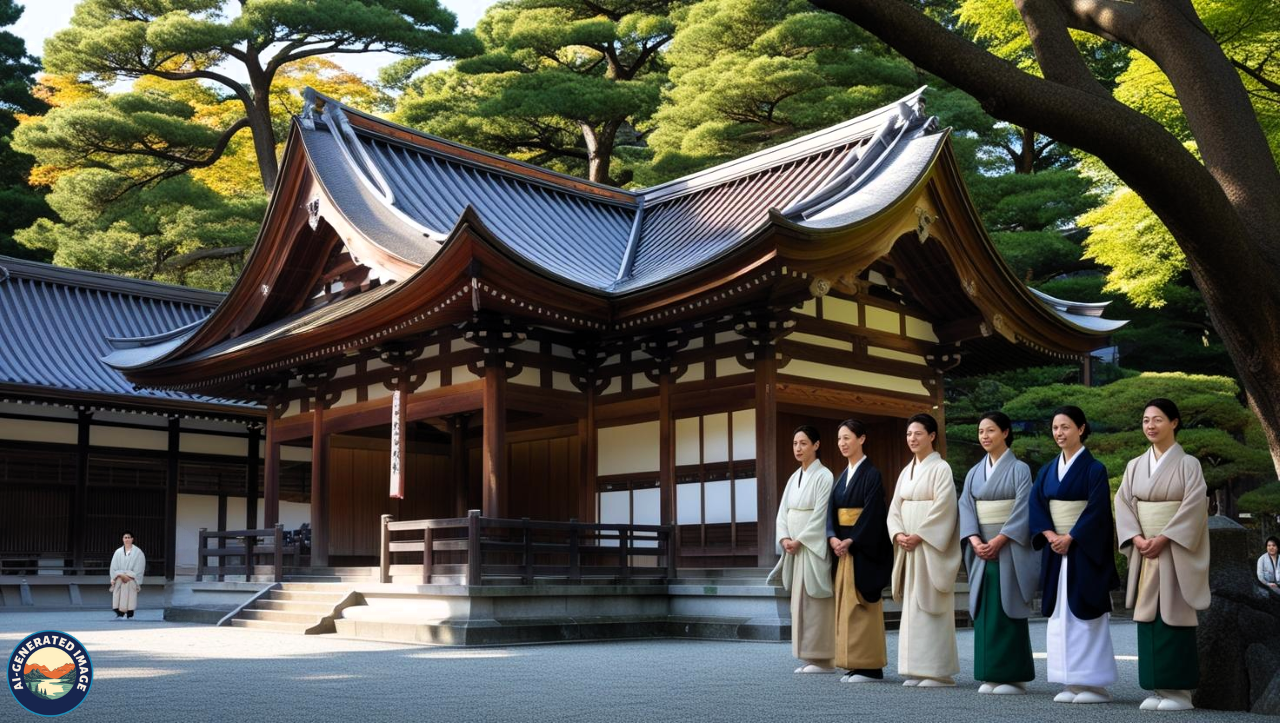
Treasure Museum
Located within the outer garden, the museum holds personal belongings, clothing, and letters of the Emperor and Empress. It offers a deeper look into their lives and the dramatic changes they brought to Japan.
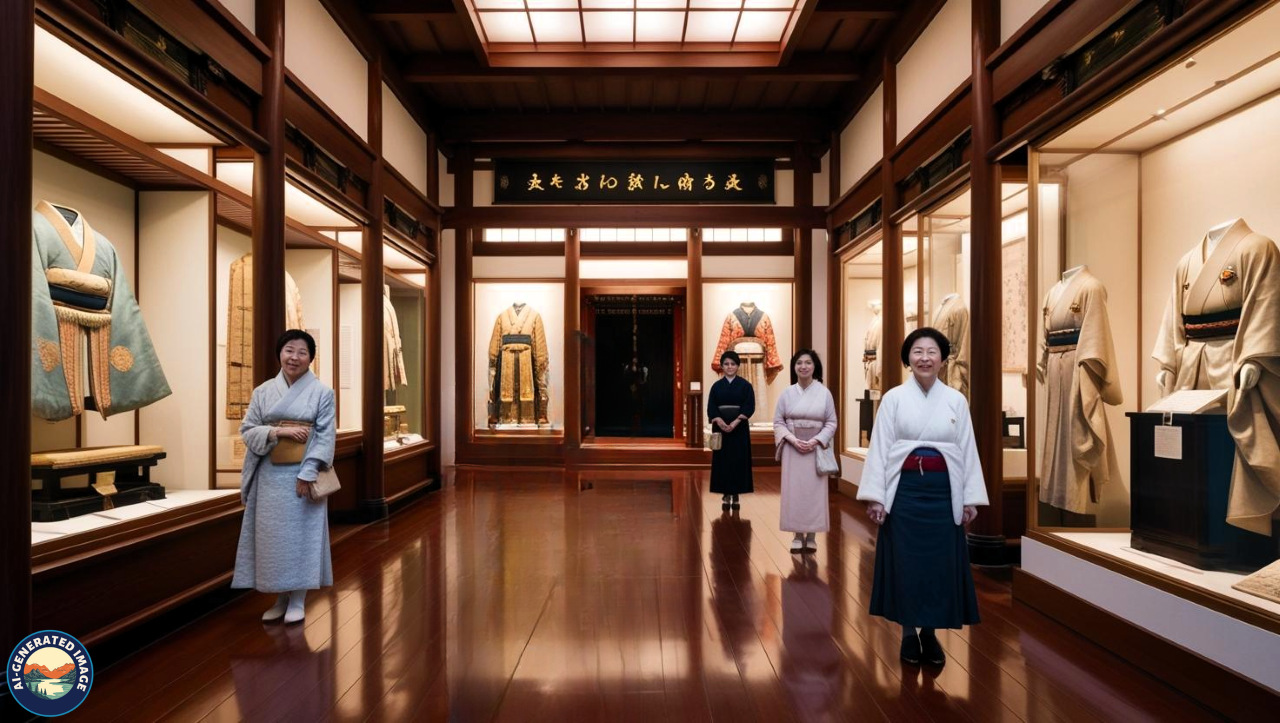
Ema (Wishing Plaques)
Visitors can purchase wooden plaques called ema, on which they write their prayers or wishes. These are then hung near the prayer wall — a blend of individual hope and collective spirituality.
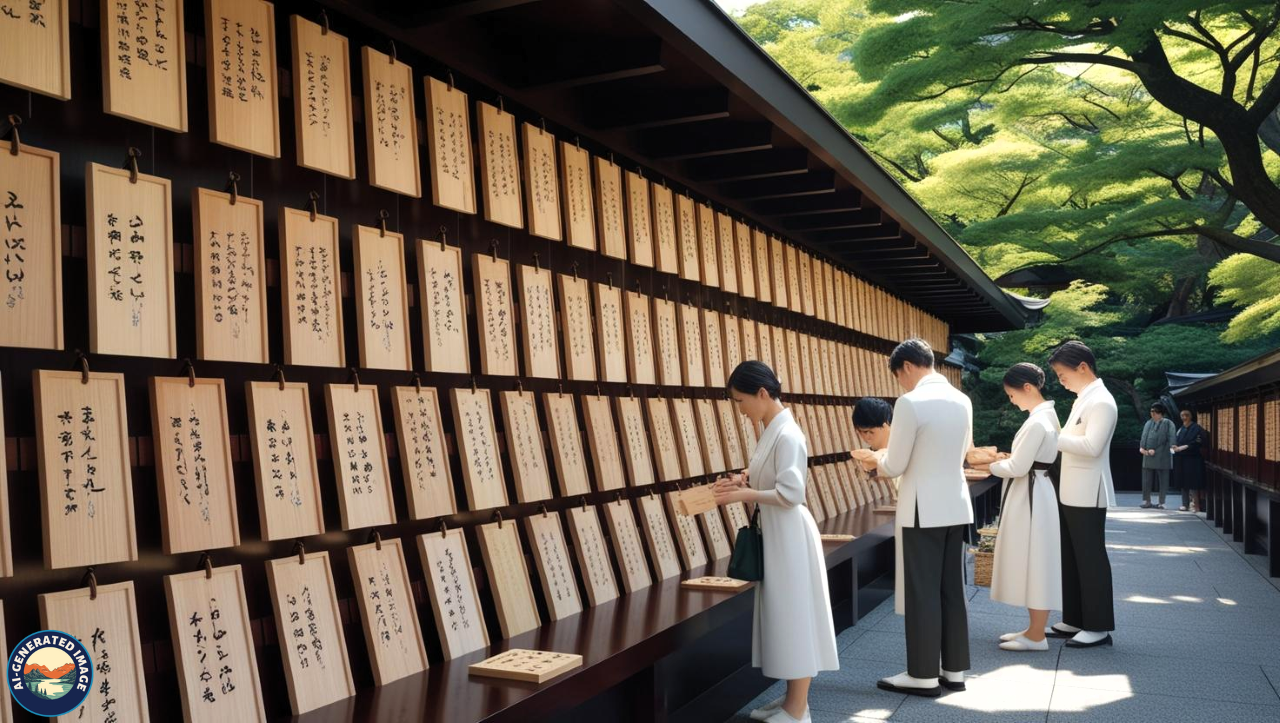
Camphor Trees and Nature
Sacred camphor trees wrapped in shimenawa ropes symbolize divine presence. Visitors often bow or touch these trees in silent reverence, believing in their healing power.
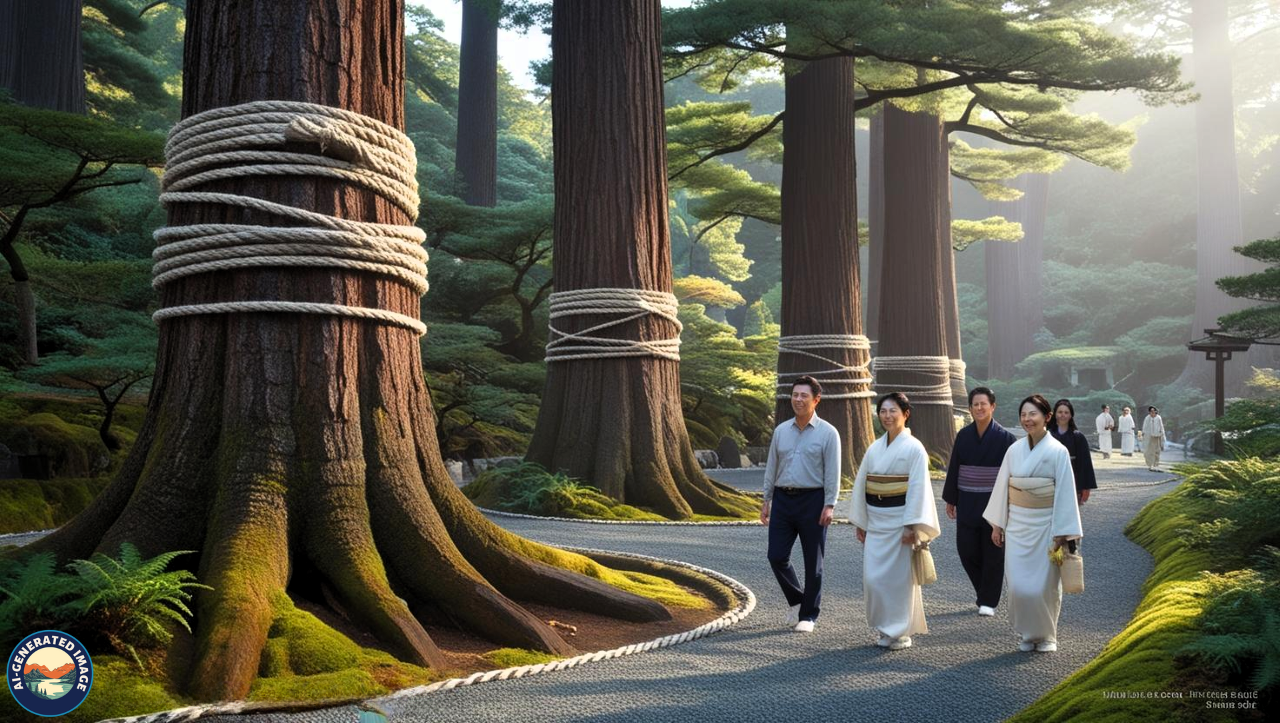
Best Time to Visit
Seasonal Beauty
-
Spring (March–May):
-
Cherry blossoms grace the paths, especially near the Inner Garden.
-
Summer (June–August):
-
The forest is lush and alive with cicadas.
-
Autumn (October–November):
-
Brilliant reds and golds light up the forest.
-
Winter (December–February):
-
A peaceful atmosphere and fewer tourists.
Special Events
-
New Year’s Day:
-
Expect massive crowds, traditional food stalls, and live ceremonies.
-
November 3 (Meiji Festival):
-
Watch traditional martial arts, bugaku (court dance), and floral exhibitions.
-
Shichi-Go-San (Nov 15):
-
See children in kimono accompanied by proud parents for blessings.
Pro Tip
To avoid the crowds, visit early in the morning or on weekday afternoons. Sunrise hours are particularly magical as sunlight filters through the misty forest.
How to Reach
From Major Tokyo Districts
-
From Shibuya:
-
2 minutes on the JR Yamanote Line to Harajuku Station.
-
From Shinjuku:
-
4 minutes on the JR Yamanote Line to Harajuku Station.
Nearest Stations
-
Harajuku Station (JR Yamanote Line) –
-
Directly adjacent to the southern entrance.
-
Meiji-Jingumae Station (Tokyo Metro Chiyoda/Fukutoshin Lines) –
-
Offers underground access.
Accessibility
The shrine is wheelchair accessible with paved paths and ramps. Restrooms and information kiosks offer services in multiple languages.
Nearby Attractions
Takeshita Street
A haven of youth culture, crepes, and quirky fashion — perfect for a cultural contrast after your shrine visit.
Yoyogi Park
Adjacent to the shrine, this open green space is ideal for picnics, people-watching, and weekend performances.
Omotesando Avenue
Known as Tokyo’s Champs-Élysées, this upscale street is lined with designer boutiques, cafes, and architectural wonders.
Suggested One-Day Itinerary
-
Start at Meiji Shrine (morning)
-
Stroll through Yoyogi Park
-
Lunch on Takeshita Street
-
Shop along Omotesando
-
Evening coffee or ramen in Harajuku
Traveler Tips and Etiquette
Cultural Do’s
-
Cleanse at the Temizuya:
-
Wash hands and mouth before praying.
-
Bow before entering through torii gates:
-
As a sign of respect.
-
Offer prayers:
-
Two bows, two claps, one bow — the traditional Shinto method.
Cultural Don’ts
-
Do not walk in the center of the path — this is reserved for the gods.
-
Refrain from loud conversation or inappropriate selfies.
-
Don’t point at sacred objects or disturb worshippers.
Purchasing Charms
Omamori (charms) are available for health, love, studies, and safe travels. These make meaningful souvenirs.
Conclusion
Meiji Shrine is far more than a place of worship. It is a sanctuary of reflection, a historical monument, a cultural cornerstone, and a breath of fresh air in the heart of Tokyo. Whether you’re a history buff, a spiritual seeker, or simply a traveler looking to understand Japan’s soul, Meiji Shrine welcomes you with open arms and centuries-old wisdom.
Take a moment to bow at the torii, breathe in the scent of cypress trees, and feel the ancient calm that only places like this can offer. In a city that rarely pauses, Meiji Shrine is where time stands still — if only for a moment.
FAQs
What is the entrance fee?
There is no entrance fee. The main shrine grounds are free to enter. A small fee is charged for access to the Inner Garden and Treasure Museum.
How long does it take to explore Meiji Shrine?
Around 1–2 hours are sufficient for a relaxed visit. Add extra time if you plan to explore the museum or nearby gardens.
Can I take photos inside Meiji Shrine?
Yes, photography is allowed in most areas, but not inside the main shrine buildings or during ceremonies. Always be respectful.
Is Meiji Shrine open every day?
Yes. It opens at sunrise and closes at sunset every day of the year, including public holidays.
Are English signs and guides available?
Yes. Signs and pamphlets are available in English, and English-speaking guides are often on-site during peak seasons.
Can foreign tourists participate in rituals or buy charms?
Absolutely! Foreigners are welcome to participate in rituals, offer prayers, and purchase omamori charms.
What’s the difference between Meiji Shrine and Buddhist temples like Senso-ji?
Meiji Shrine is Shinto, focusing on nature worship and ancestral spirits. Senso-ji is Buddhist, dedicated to the Bodhisattva Kannon. Rituals and architecture differ accordingly.
